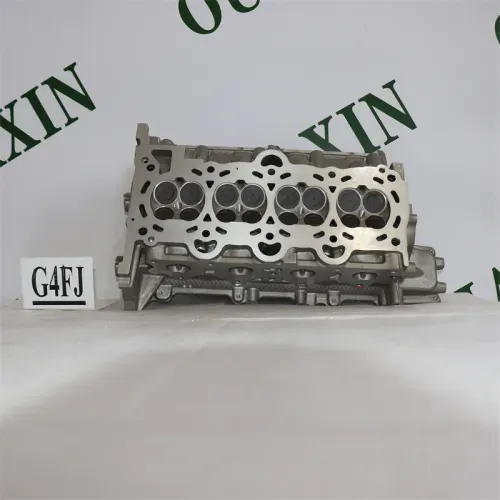
(exhaust valve price)
In evaluating exhaust valve price across industries, it is essential to understand the core determinants driving market rates and their impact on purchasing decisions. The price of an exhaust valve is not static; it fluctuates based on material, manufacturing technology, logistical constraints, and supply chain dynamics. International data from the Global Industrial Valves Market (2023) indicates a year-over-year increase of 4.8% in average valve pricing, largely influenced by raw material cost and precision engineering requirements. For buyers and decision-makers, being versed in the principles guiding exhaust valve pricing is essential to secure cost-effective and robust solutions, ensuring operational longevity and safety for applications in automotive, marine, and heavy machinery sectors.
Pricing tiers generally divide into entry-level, mid-range, and premium segments. For example, in 2023, entry-level exhaust valves ranged from $7 to $15 per unit, with mid-range options clustered around $18 to $32, while high-performance or bespoke engineered valves often surpassed $50 per unit. These variations underscore the critical need for an in-depth understanding when budgeting large scale purchases or customizing for demanding applications.
Technical advancements have revolutionized the value proposition and price strategy of exhaust valves. The transition from conventional steel alloys to advanced nickel-based superalloys, for instance, can lift the price but simultaneously triple component lifespan in high-temperature settings. Innovations such as friction welding, 3D metal printing, and laser-hardened stem technologies have further elevated the standards and base costs for these components.
Notably, exhaust valves with sodium-filled stems—used to enhance heat transfer in high-stress engines—command a 35% to 55% price premium compared to standard solid designs. Additionally, compliance with emission standards like Euro 6 and Tier 4 Final has accelerated the integration of superior thermal and corrosion resistance, increasing average production costs by 12% in the last five years. Companies must balance these technological advantages against lifecycle costs to fully appraise the ROI when analyzing valve exhaust price trends for fleet maintenance or OEM supply.
An understanding of how leading manufacturers price their valve products provides valuable insights for procurement strategies. Below is a comparative table highlighting key differentiators and price points among top industry suppliers (unit: USD, based on 2023 market reports):
| Manufacturer | Standard Exhaust Valve | Sodium-filled Exhaust Valve | Warranty (months) | Global Market Share (%) |
|---|---|---|---|---|
| Federal-Mogul | $16 | $39 | 24 | 9.3 |
| Mahle | $19 | $44 | 36 | 8.7 |
| TRW Automotive | $15 | $37 | 18 | 7.1 |
| GKN | $18 | $47 | 30 | 6.2 |
| OEM Local Supplier (avg.) | $11 | $32 | 12 | 4.5 |
The table demonstrates how pricing is closely linked to technical features, global warranty structures, and market influence. For example, sodium-filled performance valves are often priced 2–3 times higher than their standard counterparts. Global suppliers justify elevated costs through mature quality systems, warranty longevity, and robust R&D investment.
The relationship between the intake valve and exhaust valve extends beyond simple mechanical motion. The intake valve regulates the entry of fresh air-fuel mixture (in gasoline engines) or air (in diesels) while the exhaust valve ensures efficient expulsion of combusted gases. According to technical literature, an optimized balance between open/close timing and lift duration can improve engine output efficiency by 10–15%. Manufacturers who excel in synchronizing these functions often deliver exhaust valves with customized seat angles and unique guide coatings.
Thermal loads vary considerably between intake and exhaust valves—exhaust valves may endure peak temperatures up to 800°C while intakes usually operate below 400°C. This divergence justifies material investments and precision tolerance, impacting both intake and exhaust valve prices. Hence, technical collaboration between component suppliers and engine developers is vital for achieving superior function and cost effectiveness.
Custom-engineered exhaust valves are increasingly popular for organizations seeking prolonged uptime, improved resistance to wear, and compliance with stringent regulatory demands. Procurement statistics from major transportation industries show that tailored solutions now make up 28% of all industrial valve orders in North America. Performance customization options include proprietary alloy compositions, variable stem diameters, and unique surface finishes such as chrome-plating or nitride coatings.
In many cases, bespoke product packages may include on-site installation support, extended reliability testing, and digital twins for predictive maintenance. This holistic approach does increase the initial outlay—by an average of 21%—but results in documented cost savings on maintenance and downtime over the component’s lifecycle. For buyers in power generation, shipping, and advanced automotive sectors, partnering with valve manufacturers offering in-house engineering and testing resources frequently delivers superior net value.
Several real-world cases highlight how advanced exhaust valve specifications and strategic sourcing influence operational success. One leading marine engine OEM reported reducing unplanned downtime by 27% over three years after transitioning to sodium-filled, high-precision valves. Their TCO (Total Cost of Ownership) simulation revealed a savings of $95,000 annually on a fleet-wide scale, attributed to lower failure rates and simplified maintenance.
In automotive racing, teams using custom lightweight titanium exhaust valves improved engine acceleration response by 0.18 seconds per lap. For stationary gas turbines, replacing legacy stainless steel exhaust valves with Inconel-based parts extended replacement intervals from 18,000 to 41,000 operational hours, more than doubling reliability and reducing maintenance spend by 38%. These outcomes underscore that strategic investment in the right exhaust valve technology can translate into measurable, high-impact data benefits.
The ongoing dynamics of the exhaust valve price ecosystem require a strategic, data-driven approach. Stakeholders must weigh up-front costs against lifecycle performance, technical innovation, and market positioning of supplier partners. By examining case data, comparative manufacturer pricing, and technical advantages, businesses can align procurement more closely with project targets. Ultimately, optimizing exhaust valve spend not only secures component longevity but also drives efficiency and total system performance.

(exhaust valve price)